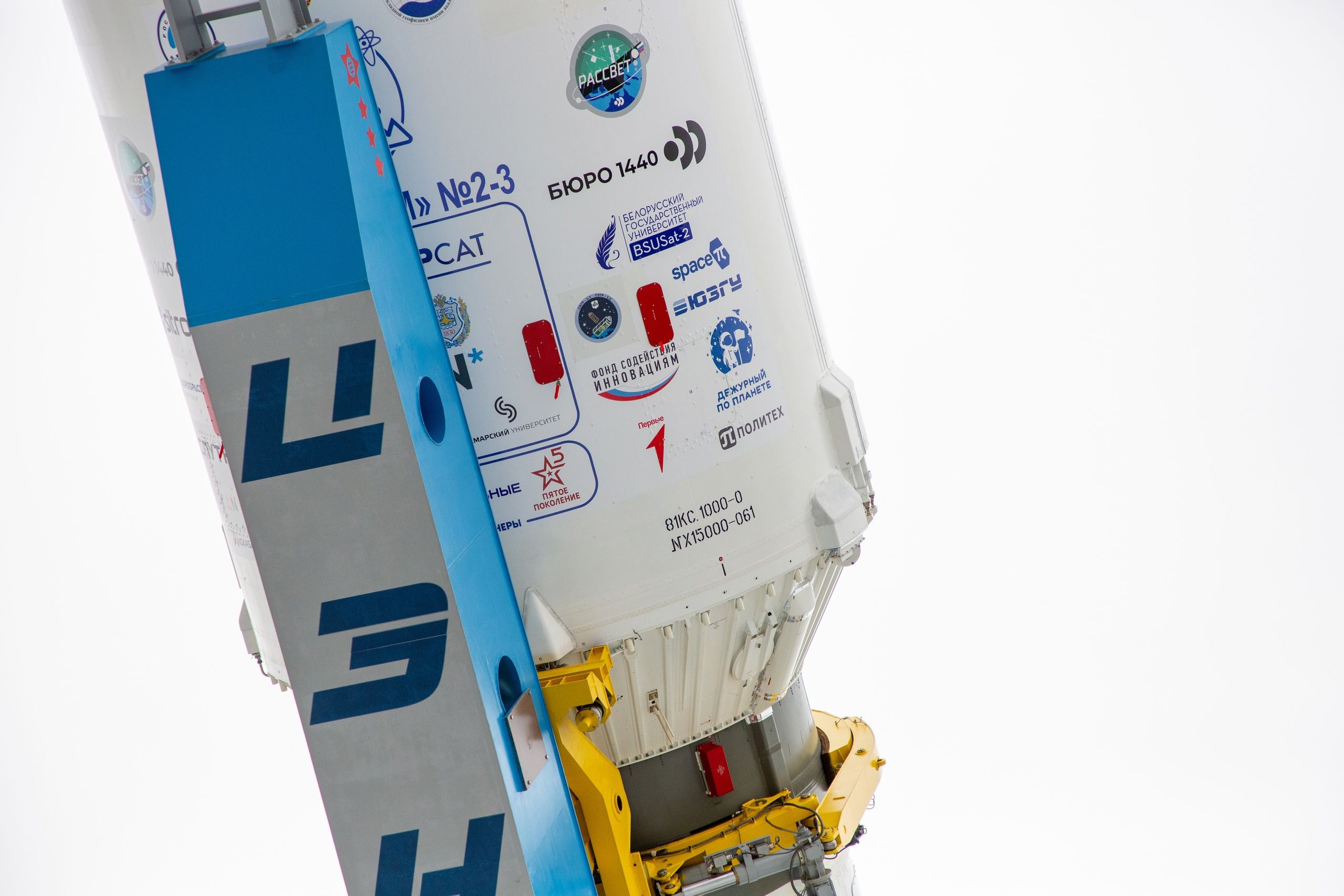
Space-π project launch of four 16U satellites
On December 28, 2025, four 16U Space-π smallsats were launched as part of the Roscosmos Soyuz-2.1b/ Aist-2T launch.
On June 27, at 14:34:49, the launch of the LV «Soyuz-2.1b» with a record number of domestic smallsats took place from the Vostochny cosmodrome
On June 27, at 14:34:49, the launch of the LV «Soyuz-2.1b» with 16 Space-π satellites on board took place from the Vostochny cosmodrome!
Scientific and educational nanosatellites of 9 universities, 4 private companies and 1 school went into space! Hundreds of children, teachers, engineers, designers and programmers took part in the development of the smallsats.
UmKA-1 – spacecraft of the Podolsk school № 29 with a t high-power telescope "Leptonar-20955K" and an astronomical camera playerOne Saturn-CSQR on board.The spacecraft aims to shoot celestial bodies from Earth orbit.
The satellite group Monitor-2, Monitor-3, Monitor-4 created by SINP MSU specialists was designed for cosmic flares observation.
Svyatobor-1 satellite was developed by students and specialists of the National Research Nuclear University «MEPhI» to control forest fires and other natural disasters.
Cube-SX-HSE-3 satellite was created by the HSE MIEM to receive signals from AIS transmitters installed on ships for the purpose of subsequent analysis of the data received from the spacecraft.
KuzSTU-1 satellite is the second satellite of the Kuzbass State Technical University within the framework of the Space-π project, the satellite is designed to study the vibro-thermal response of the SC frame in space flight conditions.
Nanosonde-1 – satellite of the Orel State University will study the conditions and factors in space affecting the surface of the spacecraft, it carries on board the world's first probe microscope for outer space, which will catch and analyze micro- and nano-meteorites and dust particles in Earth orbits in order to assess their danger to spacecraft.
ReshUCube-2 – the second SibGU satellite with several experiments on board, continues the concept of a " Сonfigurable Space Laboratory " laid down in the ReshUCube-1 mission. Within the framework of ReshUCube-2, it is planned to conduct experiments with promising communication protocols that will allow building an integrated data transmission network combining the inter-satellite communication segment with the ground segment of the terminals of the Internet of Things network.
Polytech Universe-3 – the third satellite of Peter the Great St.Petersburg Polytechnic University for creating a three-dimensional non-stationary model of the distribution of the level of electromagnetic radiation near the Earth.
UTMN-2 – Tyumen State University CubeSat for diagnostics of the troposphere and water reservoirs of the Earth. The spacecraft aims to build a «Smart City» environment in the future.
Akhmat-1 – the first spacecraft of the Chechen Republic created by students and specialists of the Kadyrov Chechen State University equipped with the ADS-В module for monitoring aircraft location.
ARCCUBE-01 satellite was developed by the autonomous non-profit organization for innovative development of education and science "FIRON" and the "Arcturus" Center. ARCCUBE-01 is an amateur satellite with a random number generator.
Vizard-meteo – a meteorological spacecraft of the Moscow company NIS, designed to monitor the formation of dangerous meteorological phenomena in the atmosphere and forecast the development of the meteorological situation.
Sirius-SINP-3U – «BG-Optics» spacecraft with an improved DeCoR-2 radiation sensor for monitoring near-Earth space designed on the Neuro-Master satellite platform.
StratoSat TK-1 spacecraft is a satellite of the «Stratonautics» company, created on the basis of the shortened Geoscan 3U satellite platform. One of the three units is a transport container for the delivery to the Earth orbit 6 picosats.
Today's launch has become a record – the largest number of Russian satellites was simultaneously put into orbit — a total of 40, including 16 3U Space-π cubesats.
Congratulations to all participants on a successful launch!

We will write to you only when something interesting appears,
no space junk